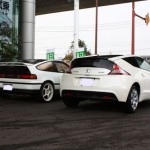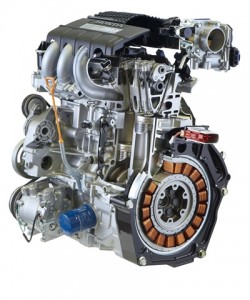Cadillac just debuted the ELR extended range electric vehicle last week at the Detroit Auto Show. The ELR is the production version of the Converj concept and is based on technologies from the Chevrolet Volt. Csaba Csere from Car and Driver interviews the engineering, design and marketing minds behind the ELR to get to some of it’s finer details. Right off the bat, this new model is a lot more than a badge swapped Chevrolet Volt. Even though the drive train shares components, the controls programming allows for more power output due to a better understanding of the battery discharge profiles. Cadillac has also decided to add more driving modes including one where the battery energy can be saved for a specific part of your journey. This is great for people whose commute starts on the highway and ends in the city where the electric motor is more efficient. A version of the hold-mode was first available on the European version of the Volt, the Opel Ampera. The ELR will also allow the driver to dial in specific amounts of regenerative braking with shift paddles located behind the steering wheel. The exterior of the ELR was specifically styled “not to scream electric car” which is to say it looks sporty and aggressive. It’s a 2-door coupe that will be about the size of the ATS (which is almost the exact same size as a BMW 3-series). The chassis has also been upgraded with 20 inch wheels, wider tracks and different suspension components for better handling. Cadillac thinks they’ll be pioneering a new market segment with the premium sport luxury extended range electric vehicle. Lets hope they’re not the only ones.
Source: CAR and DRIVER on YouTube



